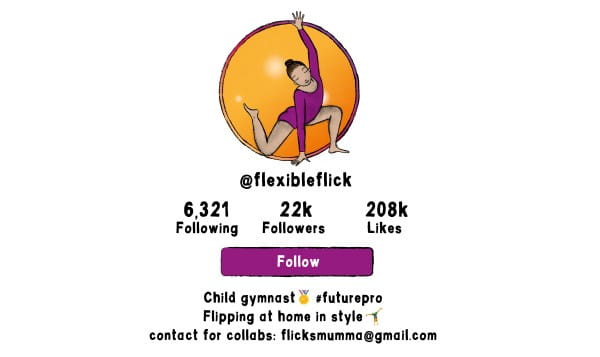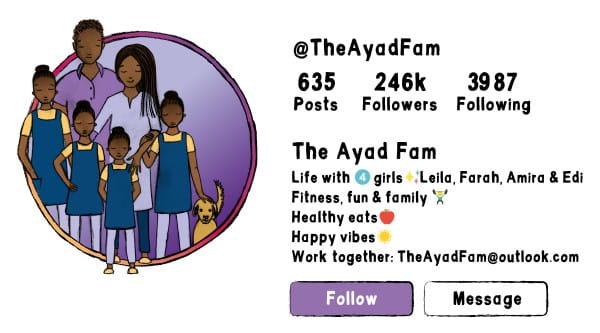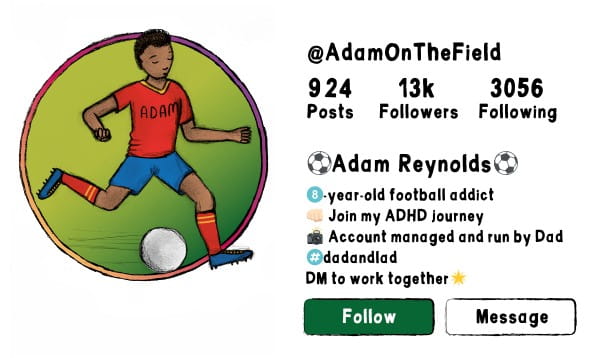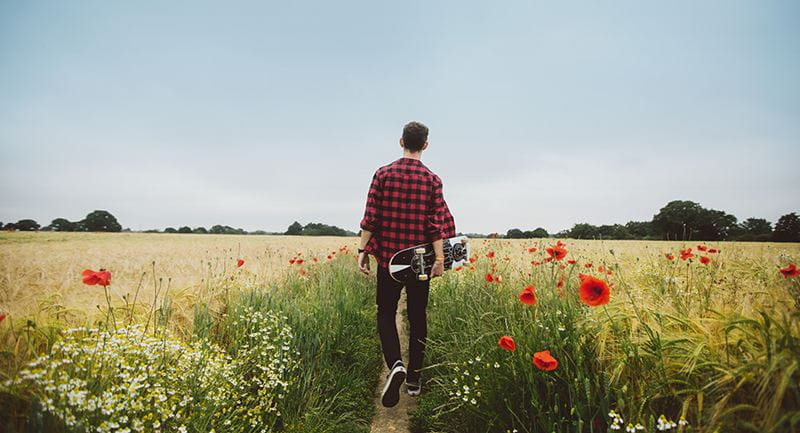Identity

Potential risks to child’s identity
These questions could be posed as part of your risk assessment practices:
- Is there an opportunity to have regular conversations about the child's views on privacy and to gain their ongoing consent?
- Is the child aware of the volume of people seeing their content, and the comments of their audience, and how is this managed?
- Could the content expose the child to increased risks of real-life or online bullying by their peers?
- In addition to family and peer support networks, does the child have access to external mental health support, if needed?
Child's views on privacy

Adam
At weekends Adam usually has training on Saturday and a match on Sunday, and in his spare time he plays FIFA on his X-box, which his Dad sometimes live streams. Adam finds this intrusive, as he sees this as his own time to have fun online with his friends.
Adam has recently been undergoing tests for ADHD and his mother has been sharing aspects of their 'ADHD journey' on Adam's account, evidencing ways in which Adam has been coping with this 'battle'.

Cole
Cole's mother started posting from the account page when he was a baby, initially as a way to log her own journey as a new parent and then building in parenting tips and advice in response to her followers. She has many posts and reels of Cole as a baby, including moments where he was having tantrums and where he struggled with potty training and bed wetting.
Cole is now 7 and in all-boys school. He has been experiencing bullying after some classmates found the older content on his account. His Mum is reluctant to delete this content as she likes to look back at his younger years, and thinks deleting it won't make a difference since it's already been seen.
Risk management
Parents are acting within the boundaries of their parental authority when sharing images of their children, but in doing so they are consenting on behalf of the children and becoming their ‘privacy guardian’. Parents are given this role because they are deemed to be acting in the ‘best interest’ of their children when considering their privacy boundaries.
It is important for parents to understand the responsibility of this ‘best interest’ right for the child and consider it fully when posting their children’s images or videos.
This could involve more informed decision-making around the filming of specific activities and/or types of content. The home is generally a safe space for children to be able to relax, play, and learn in a supported environment and children may feel betrayed or upset over the sharing of intimate fragile moments. Children should have the ability to be upset, learn basic skills, relax, and play, all without fear of the world seeing all of those moments and them being available forever.
Parents could consider the impact this would have on the child’s current and future self, as well as considering whether they would have wanted those moments of their childhood shared with the world at large. This is even more critical when sharing sensitive personal or medical information about the child, which they may not want people to know and attach to them permanently.
Consent may be difficult to obtain for early years content, and children may not understand the implications of sharing activities, so parents really do need to act as the privacy guardian here and perhaps consider ways to blur or pixelate the child, or film them in ways that they cannot be identified etc. Where brands are involved with the family, the child’s consent and/or privacy considerations could be explored within more robust contracts relating to the content provision.
Awareness of audience size and comments

Flick
Some of the reels from Flick's home have been gaining a lot of attention, with people commenting on how rich they seem even though their kid has 'zero talent' and calling Flick a 'spoilt little cow' etc.
Flick has not seen these comments online herself and her family have not discussed it with her, but some kids in her school have found out and have started treating her differently.

Edi
Edi and her sisters are aware of the comments coming from viewers of their account activities and regularly discuss which one is seen as 'prettier' or 'cuter'.
Edi's parents regularly talk about 'numbers' at the dinner table as well as how 'natural' or 'relaxed' the children should look in their content and tell them off if they are seen to be 'grumpy' or 'bored'.
Risk management
Parents may feel a sense of pride in the attention being received by their child’s performances and discuss this in terms of ‘numbers’ of ‘followers’, as well as sharing feedback. This can make a child feel validated and that they are pleasing their parent but, on the other hand, sometimes this can cause pressure and/or normalise conversations relating to more superficial aspects of the child’s life. Children will naturally be curious about responses and reactions to their performance, but parents will have to decide how much of the ‘audience’ reaction to share with or shield from their child, as responses can also be negative or hostile.
Parents will obviously be aware of all aspects of their children’s lives and should treat this as a performance, rather than reality, and encourage their children to view it in a similar light. Where the content is resulting in unpleasant responses from viewers there are a number of options available;
- Block and report problem accounts
- Turn comments and messaging off
- Review the content and try alternative approaches
- Cease the performances/close the account
Brands may want the comments facility to be active, in order to engage viewers, but ultimately parents will need to decide on the best interests of the child in these situations, as negativity online can grow quickly and open the child to hostilities in their real-world experiences.
Bullying risks

Cole
Cole is currently in an all-boys school but has been getting teased and bullied by other children because of his artistic personality and his online dance reels. The boys have also found some of the reels relating to his early years potty training and now taunt him and call him names.

Flick
Some of the reels from Flick's home have been gaining a lot of attention, with people commenting on how rich they seem even though their kid has 'zero talent' and calling Flick a 'spoilt little cow' etc.
Flick has not seen these comments online herself and her family have not discussed it with her, but some kids in her school have found out and have started treating her differently.
Risk management
Again, parents may begin sharing content from a sense of pride in their child’s performances and this may even be endorsed and encouraged by sports or drama clubs, as a way to build an audience for the child from a young age. However, as explored above, external audience opinions can be negative and/or hostile, and negativity online can grow quickly and open the child to hostilities in their real-world experiences.
Under national guidelines, broadcasters have a duty to consider the risk of bullying (including online) that any filming could cause (e.g. in UK s.1 OFCOM Broadcasting Code). This duty acknowledges that the child may become a target for their peers, resulting in bullying behaviours at school, as well as cyberbullying at home, which usually happens where the child is perceived as ‘different’ or ‘uncool’ in some way by their peers.
Parents and brands could consider this duty and carry it across to their own actions, looking the possible impact of the content on the reputation of the child, as well as any potential for their embarrassment.
Research indicates that children have experienced bullying or cyberbullying in relation to content that shows the child;
- with same gender parents,
- with a physical impairment,
- with autism,
- doing something ‘embarrassing’, or
- wearing something deemed ‘ugly’.
This might seem like an unpleasant aspect to consider in terms of unacceptable social responses but, as ‘privacy guardians’ (see above), parents have the ultimate responsibility for the online portrayal of their children’s lives.
Mental health support

Adam
Adam has recently been undergoing tests for ADHD and his mother has been sharing aspects of their 'ADHD journey' on Adam's account, evidencing ways in which Adam has been coping with this 'battle'.
Adam has been misbehaving at times at home, speaking rudely to his parents and breaking things, but his parents are not sure whether this might possibly be ADHD-related. His ADHD appointments are another thing to fit into an already packed schedule. His Dad has recently started to stream Adam's computer game sessions but Adam is unhappy about this as he wants some activity that does not involve an audience.

Edi
Edi and her sisters are aware of the comments coming from viewers of their account activities and regularly discuss which one is seen as 'prettier' or 'cuter'.
Edi has become very worried about her appearance, as she feels she is not as 'pretty' or as 'healthy-looking' as her siblings. She has voiced this to her mother, referring to herself as 'fat and ugly' on a number of occasions and has not been eating properly at mealtimes.
Risk management
Again, in traditional media industries, broadcasters would have a duty to consider any threats to the 'moral and mental development' of the child (In Ireland under s.3(2) Protection of Young Persons (Employment) Act 1996, and in the UK under s37(4) Children and Young Persons Act 1963). This can include wellbeing checks, as well as mental health support and enhanced risk assessment practices.
It is well documented that children can struggle with the pressures of fame, as well as being in the spotlight, and the consequences that result from such exposure. Parents and brands should work together to consider appropriate support mechanisms for successful child and family accounts, as these children are not playing a fictional role or character, but are living their real lives within their own homes.
Where parents are taking on additional roles as 'manager' or 'director' of the content, children may feel that that parents would be unhappy with them for voicing any displeasure about the content creation practices. Some independent external mental health support should be provided for children in these situations and parents and brands could consider this as part of their 'best interest' approach to supporting child performers on social media platforms.
© Copyright University of Essex 2025

Health and safety





